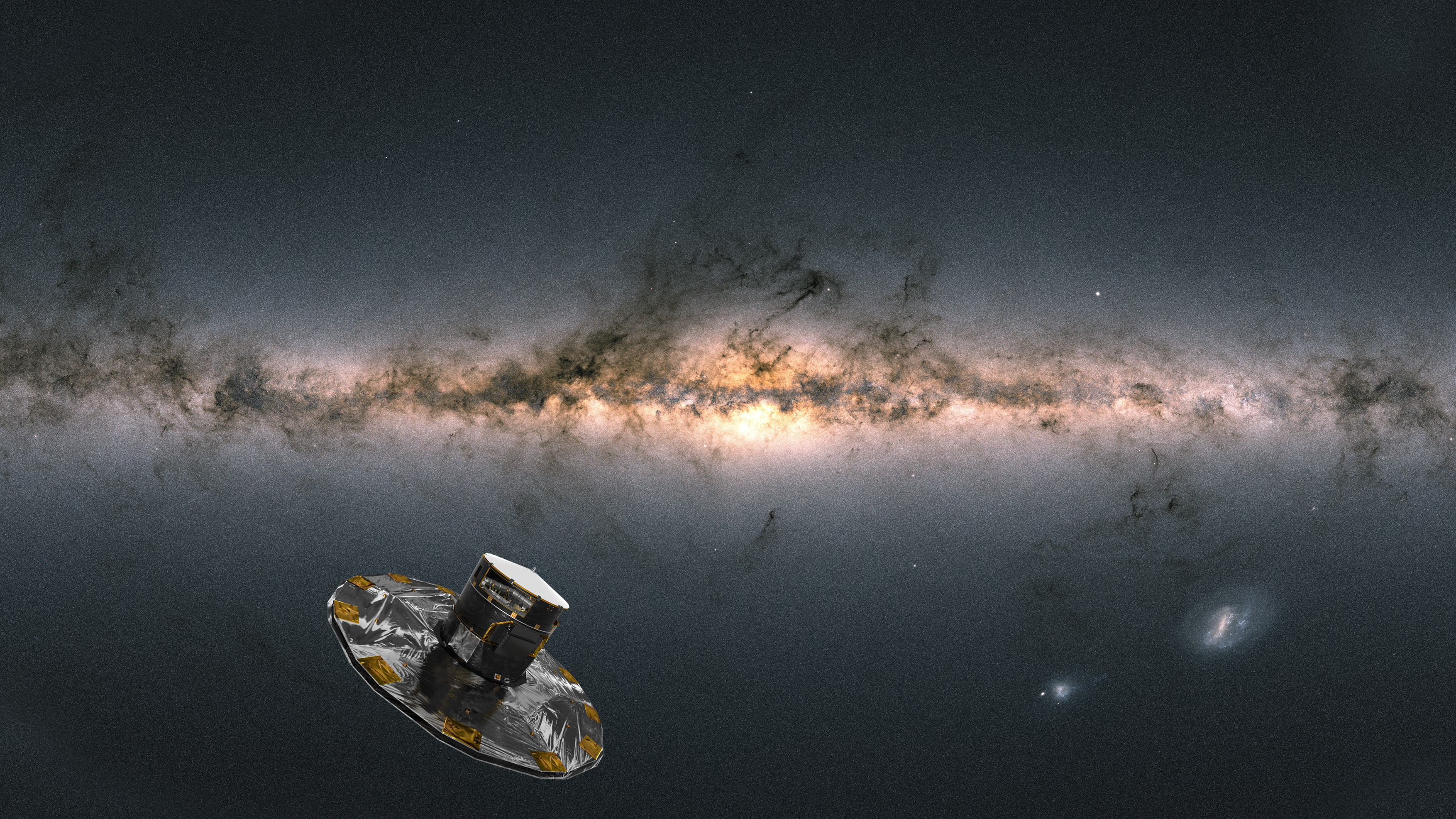
An artistic illustration of Gaia satellite observing the Milky Way with its data released in December 2020. /European Space Agency
An artistic illustration of Gaia satellite observing the Milky Way with its data released in December 2020. /European Space Agency
Have you wondered why the illustration of the milky way galaxy is always in a spiral structure of a planar surface? It turns out such configuration is only transient, at least the latest findings have suggested.
Scientists from Finland have explained that the planar formation is only a temporary arrangement, a new study published in the Nature Astronomy magazine said.
Our galaxy, the Milky Way, is surrounded by smaller dwarf galaxies, according to the European Space Agency (ESA).
These small galaxies grew to form larger galaxies as they were trapped by a massive halo of dark matter according to conventional models of galaxy growth. The dwarfs, which are the leftovers of that process, should be scattered randomly around the Milky Way's dark matter halo, but are seen orbiting around our galaxy like satellites.
This is the so-called "plane of satellites problem," which challenges not only the standard cosmological model but the entire concept of dark matter.
However, scientists now have compiled a model using motion measurements data collected by ESA's Gaia space telescope and calculated trajectories of the satellite galaxies forward and backward in time.
They found that "the orbital pole alignment is much more common than previously reported, and the plane of satellites to be transient rather than rotationally supported," the study said.
"They just happen to be in the plane today, that's the coincidence of the whole thing, and in a billion years or less they will leave the plane," Carlos Frenk, a cosmologist at the University of Durham in the UK and a member of the research team, told Space.com.